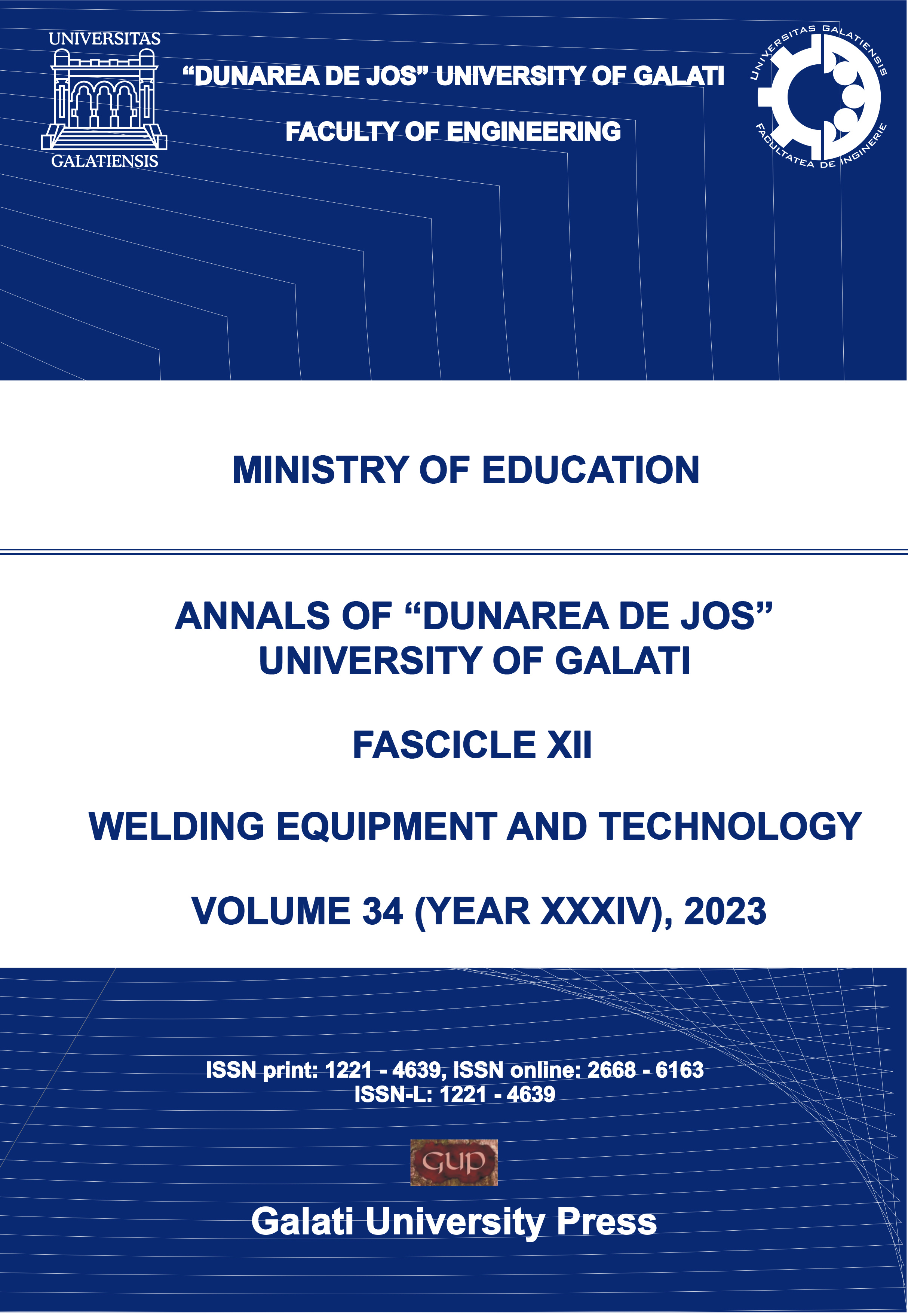A Synthetic Approach to Cold Presure Welding on Cogged Surfaces
Abstract
Pressure welding on cogged surfaces represents a new technological variant of the cold welding. The components that are made from a material with higher plasticity (aluminium, lead etc.), having flat surfaces, are pressed on or between the harder material components (copper, brass, carbon/stainless steel, titanium, etc.) that have cogged surfaces. The main particularity of this technique is to achieve an appropriate joint by deforming only the component with higher plasticity. Due to the low degree of deformation needed, reduced pressure forces are applied in comparison with the classical cold pressure welding. The welding in isolated catching nodes is achieved by gripping, while the aluminium is gliding on the flanks of the teeth. The tensile strength of the joint is relatively low reaching up to 10% of the aluminium part, but can be improved by applying a heat treatment. Welded joints were made in various combinations, resulting in bimetallic or multilayered workpieces. Due to the negligible contact resistance, these joints can be appropriately used for applications in the electrotechnical field.
Downloads
Papers accepted for publication become the copyrighted property of the Annals of "Dunarea de Jos" University of Galati, Fascicle XII, Welding Equipment and Technology. No part of the publication may be reproduced or transmitted in any form, or by any means, electronic or mechanical, including photocopy, recording, or any information storage and retrieval system, except in limited quantities for the non-commercial purposes of scientific or educational advancement, without permission in writing from the Editorial Board.


